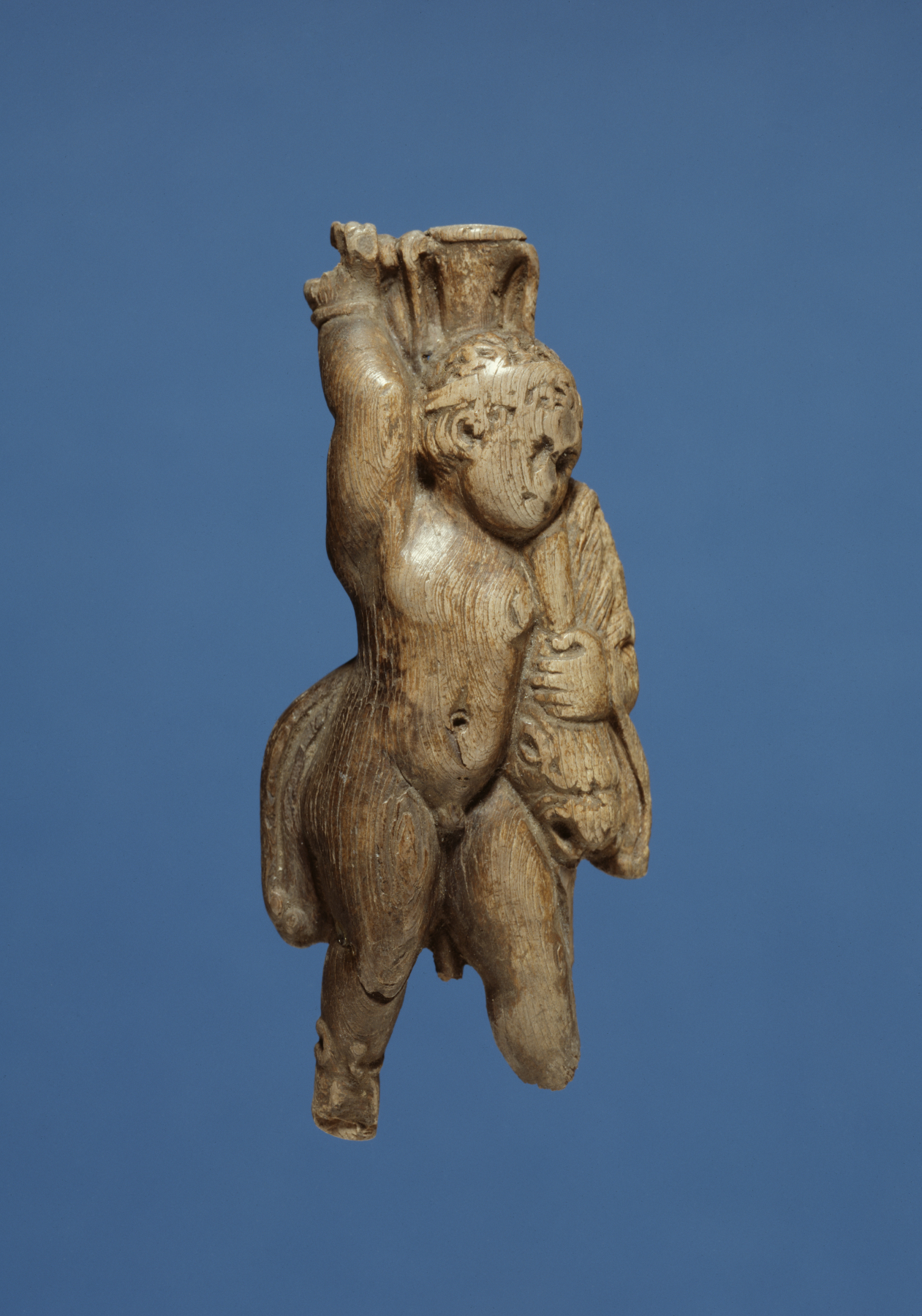Eros as the Child Herakles
(Ancient Greece )
Eros, shown without wings, is masquerading as the child Herakles. The lion's skin is slung over his left shoulder and reappears beside his right thigh. He steadies an amphora over his left shoulder, one hand on the butt end, the other beside the handles. The amphora is awkwardly modeled; the top and bottom parts are not aligned. Eros wears a serpentine bracelet on his right leg, a bracelet on his right wrist, and a fillet on his head. The figure is finely modeled and, despite wear, careful attention to details is apparent.
The feet and right hand of the figure are broken off, and the surface is worn. The backside is flat and is notched behing the upraised arm, probably to facilitate attachment to a box or a piece of furniture. There are two pairs of holes on the back, one pair in the notch, the other higher up, none piercing the relief.
Erotes with amphoras over their shoulders appear elsewhere in Hellenistic art.
Ivory sculptural work of the Hellenistic period is uncommon.
Provenance
Provenance (from the French provenir, 'to come from/forth') is the chronology of the ownership, custody, or location of a historical object. Learn more about provenance at the Walters.
Henry Walters, Baltimore [date and mode of acquisition unknown]; Walters Art Museum, 1931, by bequest.
Exhibitions
| 1988-1989 | From Alexander to Cleopatra: Greek Art of the Hellenistic Age. The Walters Art Gallery, Baltimore. |
Conservation
| Date | Description | Narrative |
|---|---|---|
| 8/12/1982 | Treatment | cleaned |
Geographies
Greece (Place of Origin)
Measurements
H: 1 5/8 in. (4.18 cm)
Credit Line
Acquired by Henry Walters
Location in Museum
Not on view
Accession Number
In libraries, galleries, museums, and archives, an accession number is a unique identifier assigned to each object in the collection.
In libraries, galleries, museums, and archives, an accession number is a unique identifier assigned to each object in the collection.
71.18


